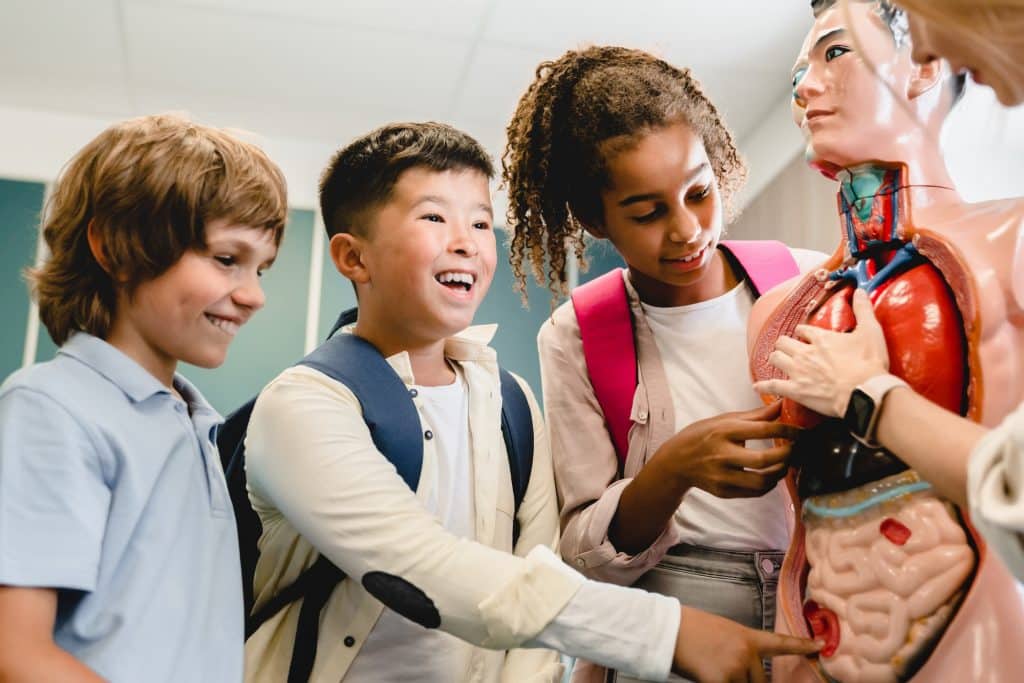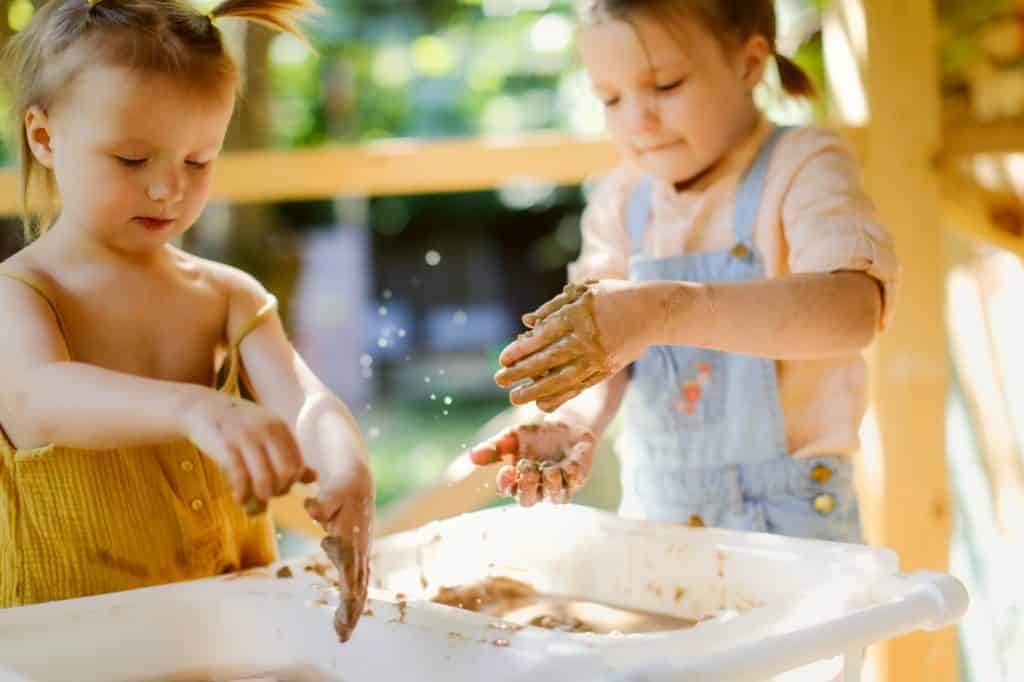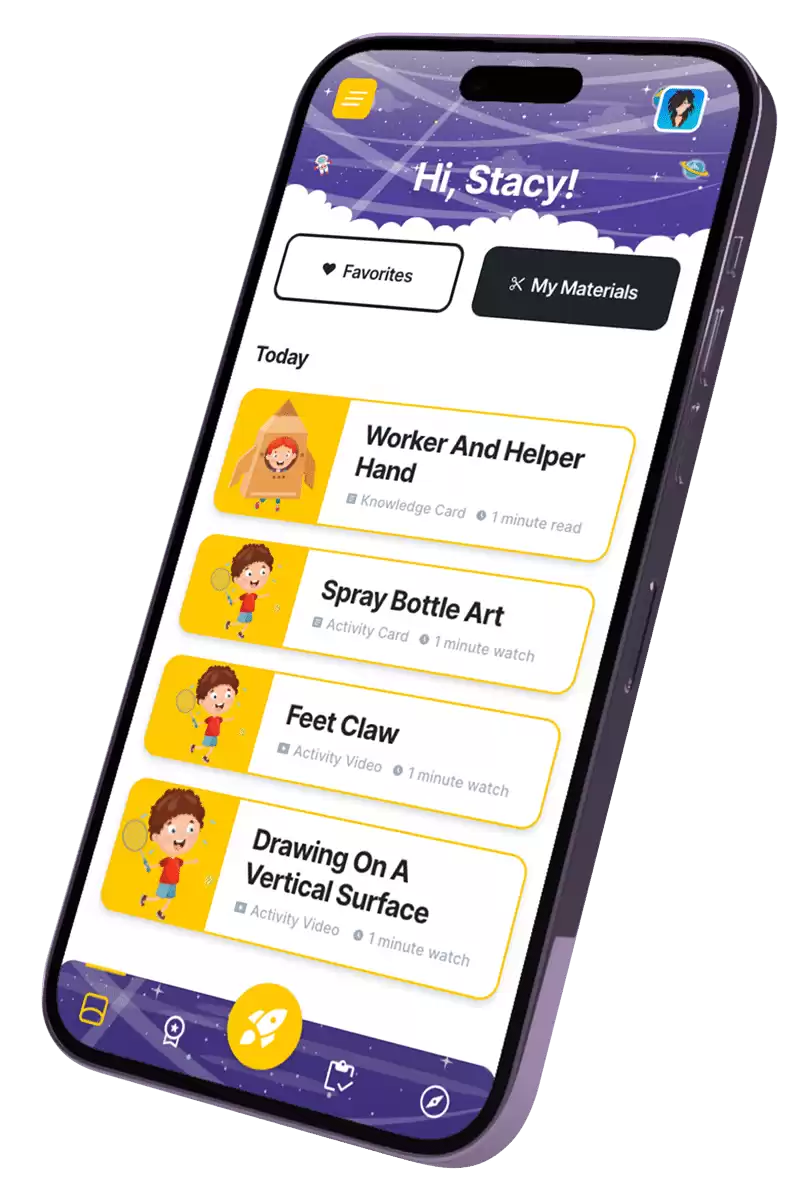What is Sensory Processing?
Sensory Processing or Sensory Integration is the “organization of sensory information for functional behavior” (O’Brien & Kuhaneck, 2020). It is the ability of an individual’s nervous system to receive, interpret and respond to the sensory input from the environment.
History of Sensory Integration
Dr. A. Jean Ayres (PhD) was an Occupational Therapist and Psychologist who had a keen interest in understanding the brain’s function on the child’s ability to be successful in their occupations (O’Brien & Kuhaneck, 2020).
Ayres coined the term “Sensory Integration in the 1950s and since then, her concepts around sensory processing and revolutionalized the thinking of Paediatric Occupational Therapists.
What are our 8 senses?
Most people commonly know about our 5 senses, but in fact, we have 8 senses. These are:
- Visual
- Auditory
- Olfactory
- Gustatory
- Tactile
- Proprioception
- Vestibular
- Interoception
Visual Processing

Visual processing, or visual information processing, is the brain’s ability to analyze, interpret, and make use of the visual information received (O’Brien & Kuhaneck, 2020). This is different from visual acuity, which is the ability to see clearly.
Optometrists are the ones who can evaluate visual acuity to see whether you need glasses or not. On the contrary, Occupational Therapists often help people who have difficulty with visual perceptual skills.
Types of Visual Perceptual Skills
Under visual information processing, there is a range of visual perceptual skills. These include:
- Visual Discrimination
- Figure Ground
- Visual Closure
- Visual Sequential Memory
- Visual Motor Integration
- Visual Form Constancy
- Visual Spatial Relationship
Difficulty with Visual Processing Skills
Most children who have difficulty with visual processing skills may encounter a range of sensory processing issues throughout their daily life.
These Young children may have difficulty with:
- Reading
- Copying from the board
- Frequent letter and number reversals
- Learning the alphabet
- Sloppy handwriting
- Finding objects within the room
Strategies to Help with Visual Processing
Before trialing these strategies, it is important to get your child’s eyes tested to see whether they need glasses or not. Therefore, seek further information from an Optometrist.
However, if your child has good visual acuity and displays some of the above behaviors, here are some activities to do to help these visual sensory issues:
- Play matching card or memory card games
- Play Spot the Difference games
- Do puzzles
- Play dot-to-dot
- Partially hide objects under a cloth to see if they can name the object
Auditory Processing
Auditory processing or auditory perception is the ability to discriminate and interpret sound. Similar to vision, auditory processing is different from hearing. An individual can have trouble with auditory processing but have perfect hearing.
There is a close connection between the auditory system and the vestibular system. Both of them rely on the receptors from the ears and work together to manage movement and sound.
The function of Auditory Processing
Auditory processing allows us to:
- What is the sound
- Know where the sound is coming from
- If the immediate response to the sound is needed (e.g. a loud, scared scream)
- Distinguish between foreground and background noise (i.e. focus on someone talking rather than the noises in the background)
Difficulty with Auditory Processing Skills
Children who have difficulty with auditory processing skills may find it difficult to interact with people and the environment in everyday life.
Because of these auditory sensory issues, they may have difficulty with:
- Following instructions
- Distracted by background noise
- Difficulty to concentrate and focus, especially in a busy environment
- Appear distressed by loud or sudden noises
- Have difficulty tracking a sound within the environment
Strategies to Help with Auditory Processing
Before trying these strategies, please consider getting your child’s ears tested first. If there are no issues with hearing, then consider trialing some of the below strategies for sensory issues.
- Gain their attention first before giving them instructions
- When providing instructions, keep them short and only give them one instruction at a time.
- Trial using visual information (e.g. writing on the board or picture of the activity) rather than verbal instructions
Olfactory Processing
Olfactory processing is the ability to process smells. There is less focus on this sense compared to other senses. This may be due to the limited impact on daily activities, or that is a difficult area to assess. A sensory processing measure can also be used to assess sensory information from your child.
However, there is research suggesting links between the olfactory sense and memory (Menini, 2009). There is still much to be learned about olfactory processing.
Difficulty with Olfactory Processing Skills
Children who have sensory processing issues with smells may:
- Have difficulty distinguishing between distinct smells like lemon and vinegar
- May choose foods depending on how they look rather than the smell
- Prefer strong odors as sensory stimulation
- Smell non-food objects
- Gag at strong smells
- Avoids sitting at the dinner table
- Sensitive to strong smells could result in a sensory overload or sensory meltdown
Strategies to Help with Olfactory Processing
If you think your child has difficulty with olfactory processing, consider the following strategies.
- Slowly introduce neutral smelling foods to the dinner table. Gradually move them close to your child.
- Work on teaching them different smells
- If they are distracted by smelling different objects, they may benefit from a “toolbox” of smells e.g. essential oils, scented pens
Gustatory Processing
Also known as taste, gustatory processing is the ability to process what we taste.
Similarly, gustatory processing is not a major focus when talking about sensory processing. However, this is an important sense when considering Picky Eaters, especially those who do not like more sensory stimulation of certain foods due to the taste and texture.
Difficulties with Gustatory Processing
Individuals who have difficulty with gustatory processing may be under-or over-responsive to their taste. The child’s sensory seeking behavior & symptoms may look like:
- Objection to certain textures and temperatures
- May gag while eating
- Not responsive to strong tastes e.g. very spicy
- May prefer strong tastes
- Taste non-edible objects
Strategies to Help with Gustatory Processing
- If your child is tasting non-edible objects, redirect them to edible foods
- Slowly introduce different textures into their diet
- Try foods with different temperatures e.g. cold or warm and see if there is a preference
Tactile Processing

Touch or tactile processing includes all Physical contact related sensory processing such as light touch, deep pressure, skin stretch, vibration, movement, temperature, and pain (Kranowitz, 2005).
Tactile Dysfunction
Tactile dysfunction is when there is ineffective processing of the tactile system.
Here are some of the symptoms of tactile dysfunction:
- Does not like being touched by other people
- Avoids crowds
- Dislikes having hair or face washed
- Dislikes sensory play
- Appears to have high pain threshold
- Enjoys messy play
- Touches everything around them
- Does not like wearing certain clothing
Strategies to Help with Tactile Processing
- Do deep pressure activities before doing self-care tasks or dressing. Certain sensations such as bear hugs prior can actually help in these tasks, but not everyone with tactile processing will react the same..
- If they enjoy messy play, provide many opportunities for messy play throughout the day
- Some children may benefit from tactile tools to help them focus e.g. blue-tac or sandpaper
- Allow the child to wash their hair or face. This allows them to modulate the amount that they can handle.
Proprioception Processing
Proprioception or proprioceptive sense is the ability to “provide information about body position and movement of our body parts” (Kranowitz, 2005, p. 54).
Although it is not a common ‘sense’ that people know about, proprioception is an important sense, especially in young childhood development. Proprioceptive senses allow the infant to receive information about their movements, which encourages them to move and develop gross motor skills.
Difficulties with Proprioception Processing
Individuals who have difficulty with proprioception may display the following symptoms & behaviors:
- Be rigid and uncoordinated
- Avoids playground activities
- Enjoys big hugs
- Lacks inner drive to move
- Often bump or crash into things or people
- Stomps their feet as they walk
Strategies to Help with Proprioception Processing
Depending on the behaviors of the child, some of the following strategies may be beneficial.
- Engage in heavy work activities prior to a table-top task.
- Work on coloring in dark and soft. Some children have difficulty modulating their pencil pressure.
- Give them opportunities to practice gross motor skills in smaller groups
Vestibular Processing
As mentioned above, vestibular processing is related to the inner ear. Vestibular processing dysfunction is the ineffective processing of the senses received in the inner ear. People who have sensory processing issues related to vestibular processing have difficulty “processing information about gravity, balance and movement through space” (Kranowitz, 2005, p. 116).
Difficulty with Vestibular Processing
Some of these sensory issues and behaviors look like:
- Becomes over-excited with movement
- Has trouble moving quickly
- Does not like swings or being in constant motion
Strategies to Help with Vestibular Processing
Some children prefer or avoid vestibular senses.
Depending on their symptoms, here are some strategies to use with your child on their vestibular sensory issues:
- For children who enjoy vestibular activities, give them opportunities throughout the day to get this sensory input through safe measures such as allowing them to play on the swing. If the child does not receive sufficient sensory input, they may seek this input in other ways, for example, swing on the chair in class (which can be unsafe).
- For children who avoid vestibular senses, work on slowly moving from different positions e.g. sitting to standing.
Interoception Processing

Interoception, also known as the hidden sense, provides “information about sensations coming from our internal organs” (Kranowitz, 2005, p. 54). It is the ability of our bodies to tell us if we are feeling hungry, thirsty, hot or cold, tired, mood etc.
Individuals who have sensory issues with interoception might find it difficult to recognize physical sensations. This makes it difficult for children to develop toilet training and self-regulation.
Difficulty with Interoception
Children who have sensory processing issues with interoception may display some of the following sensory processing issues & behaviors:
- Difficulty telling if they are hungry or full
- Difficulty recognising body signs
- Trouble with toilet training
- Inability to self-regulate
- Has difficulty identifying emotions within self
Strategies to Help with Interoception Processing
A child who has sensory processing issues with interoception may benefit from some of the following strategies:
- Use a mirror to get them to recognize body signs within themselves e.g. red face if they are feeling hot
- Get them to start learning body signs related to certain emotions e.g. fast heart beat when we are feeling nervous
Sensory Processing Disorder or Sensory Processing Dysfunction
Individuals having difficulty processing sensory information, which leads to a significant impact on daily life may have Sensory Processing Disorder spd.
A person is heavily dependent on receiving sensory input around our environment, the inability or disorganization of sensory information within a person’s nervous system can make it very tricky to participate in daily life and perform appropriate responses to those senses.
A child who experiences sensory processing issues has different experiences depending on how their brain interprets the information.
Sensory Processing Disorder and Autism Spectrum Disorder (ASD)
There is a high correlation between SPD and
Although SPD is not classified as a condition under the Diagnostic and Statistical Manual V, there is a clear impact of SPD on people.
For example, a child who has ASD and SPD may be tactile defensive and auditory defensive. During playtime, this child might avoid playing on the playground equipment as this is a busy environment where children often bump into each other and is surrounded by loud noises.
Therefore, an adult may see this child’s behavior as avoiding socializing with other children, when in fact it is due to their sensory processing challenges.
Because of these sensory processing challenges, your young child may lack the ability to practice their gross motor skills during lunchtime as they haven’t had a chance to play on the playground equipment.
This may result in poor motor skills, including poor balance and coordination. A sensory diet can also contribute to reducing sensory processing problems.
Summary
People who experience sensory processing issues may find it challenging to perform daily activities. Sometimes, they are able to respond appropriately, however, this may take a lot of energy and effort.
If you suspect your child has Sensory Processing Disorder (SPD), talk to your local doctor or Occupational Therapist. They will help your child learn sensory integration therapy to manage their sensory issues.
Check out ReadyKids online platform for more resources to learn more about sensory processing and support children with sensory processing difficulties.
Disclaimer: All strategies in this article are general in nature, for specific strategies please seek the advice of registered health professionals.
References
Kranowitz, C. (2005). The Out-of-Sync Child: Recognizing and Coping with Sensory Processing Disorder. New York: Penguin Putnam Inc.
Menini, A. (2009). The Neurobiology of Olfaction. Boca Raton: CRC Press.
O’Brien, J., Kuhaneck, H., & Ball, B. (2020). Case-Smith’s Occupational Therapy for Children and Adolescents. St. Louis, Missouri: Elsevier.






